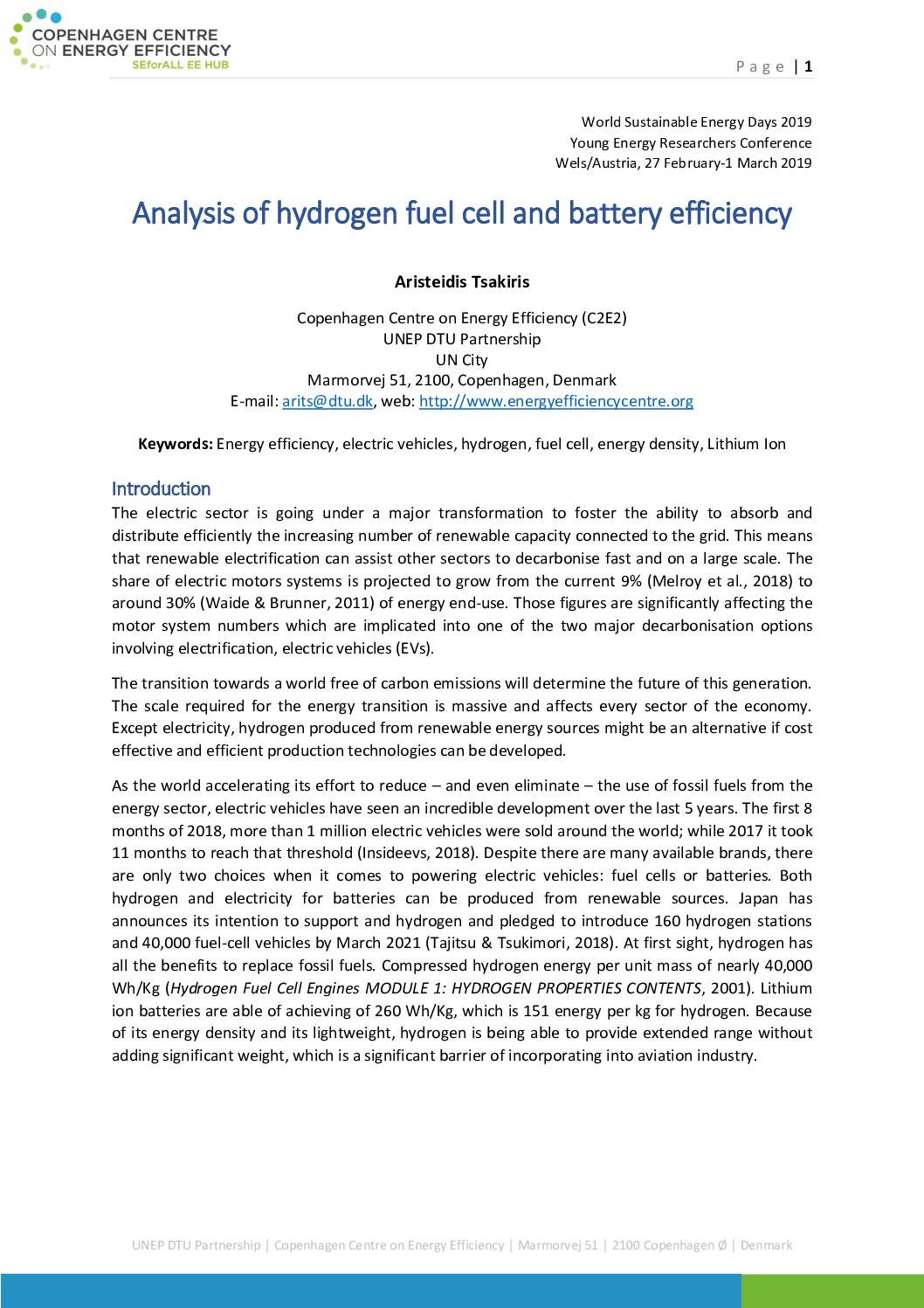The transition towards a world free of carbon emissions will determine the future of this generation. The scale required for the energy transition is massive and affects every sector of the economy. Except electricity, hydrogen produced from renewable energy sources might be an alternative if cost effective and efficient production technologies can be developed.
As the world accelerating its effort to reduce – and even eliminate – the use of fossil fuels from the energy sector, electric vehicles have seen an incredible development over the last 5 years. The first 8 months of 2018, more than 1 million electric vehicles were sold around the world; while 2017 it took 11 months to reach that threshold (Insideevs, 2018). Despite there are many available brands, there are only two choices when it comes to powering electric vehicles: fuel cells or batteries. Both hydrogen and electricity for batteries can be produced from renewable sources. Japan has announces its intention to support and hydrogen and pledged to introduce 160 hydrogen stations and 40,000 fuel-cell vehicles by March 2021 (Tajitsu & Tsukimori, 2018). At first sight, hydrogen has all the benefits to replace fossil fuels. Compressed hydrogen energy per unit mass of nearly 40,000 Wh/Kg (Hydrogen Fuel Cell Engines MODULE 1: HYDROGEN PROPERTIES CONTENTS, 2001). Lithium ion batteries are able of achieving of 260 Wh/Kg, which is 151 energy per kg for hydrogen. Because of its energy density and its lightweight, hydrogen is being able to provide extended range without adding significant weight, which is a significant barrier of incorporating into aviation industry.
Download sourceShare this

Sectors: Hydrogen, Transport
Country / Region: Global
Tags: accumulators, battery, carbon, electric vehicles, electricity, electricity generation, emissions, energy, fossil energy, hydrogen, renewable energiesKnowledge Object: eLearning
Published by: Copenhagen Centre on Energy Efficiency
Publishing year: 2019
Author: Aristeidis Tsakiris

